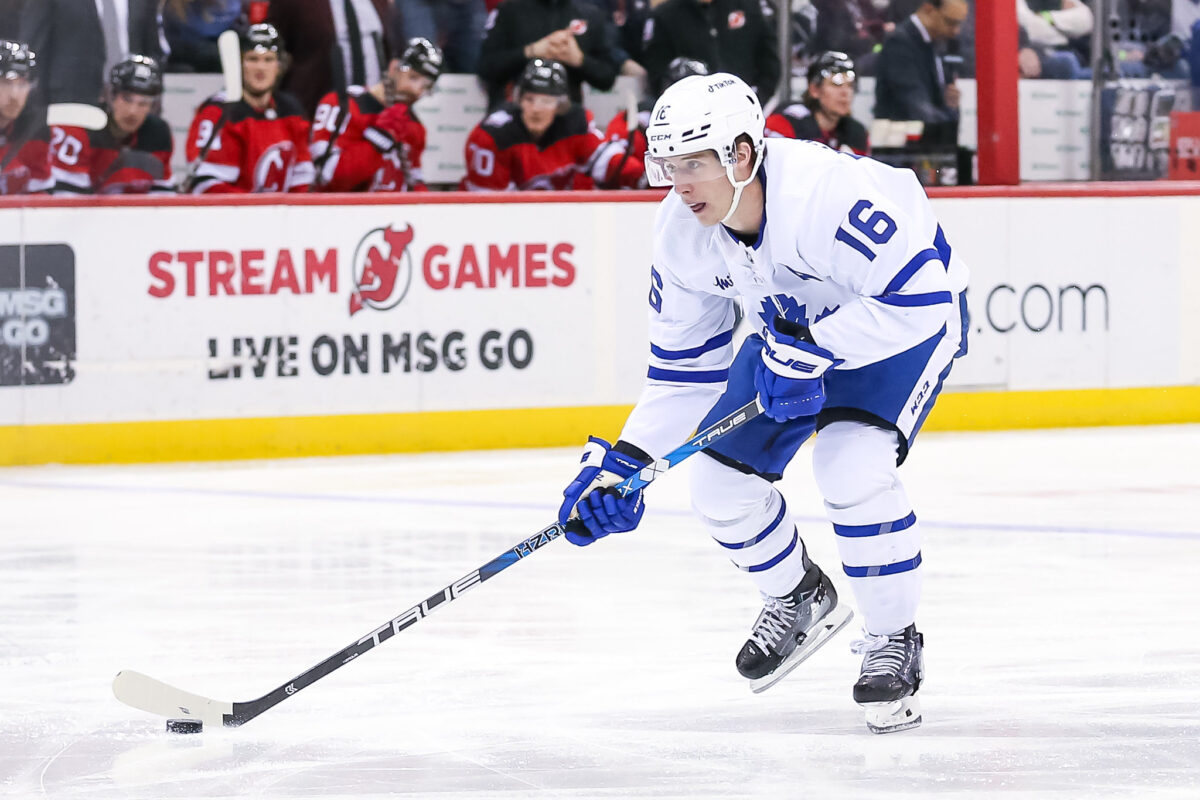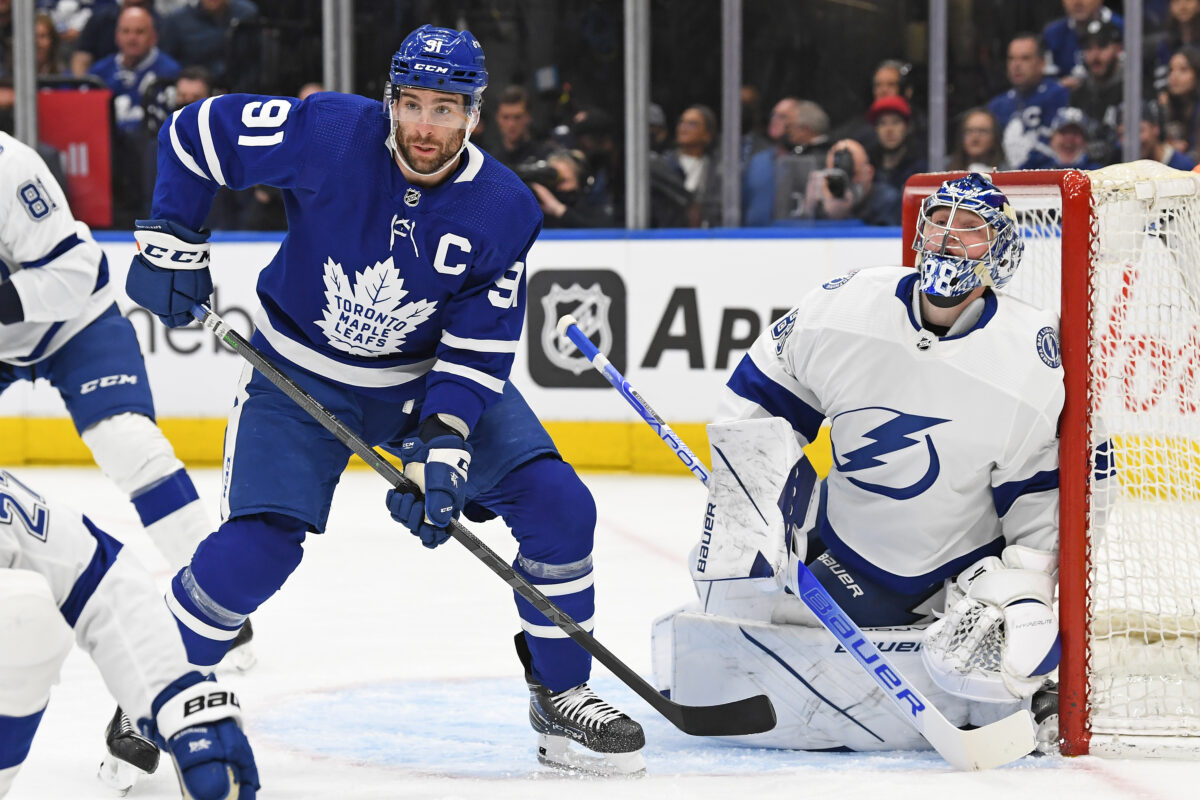Over the past four years, much has been made about former Toronto Maple Leafs general manager (GM) Kyle Dubas investing almost half of his team’s salary cap in four players. No team in the history of the NHL had invested more money into only four players. He had allocated 49.7% or $40.5 million of the $81.5 million NHL cap to Auston Matthews, John Tavares, Mitch Marner, and William Nylander.
Then, the worst possible thing happened. A planet-wide health pandemic literally brought the world to a standstill. One of the lesser important side effects of the pandemic was its effect on professional sports, and in particular on the Maple Leafs. The NHL’s salary cap was frozen.
Related: NHL “Flat Salary Cap” Will Lead to Bumpy Road
While the freeze affected every competitive team in the NHL, there’s no denying it really hurt the Maple Leafs and Dubas’ experiment of top-loading his roster. There’s no telling how differently the fortunes of the Maple Leafs would have been if the NHL had been “business as usual” over the past four seasons.
If the previous four years are an indication, the Maple Leafs would have had about $20 million in total dollars to spend on its roster.
That is all in the past.
It Seems That NHL Business Is Back to Normal
It does appear that the NHL’s business is back to normal. Over the past few years, the NHL raised its salary cap from $81.5 million to $83.5 million. In addition, the salary cap is predicted by Capfriendly.com to jump up by $4 million to $87.5 million in the summer of 2024. It’s then predicted to grow another $4.5 million to $92 million in 2025.
If newly-hired GM Brad Treliving plays his cards correctly, the Maple Leafs might be able to keep its core four forwards together while surrounding them with a solid support group. That will depend on Treliving being fair but firm with the four players. There is a way that each of these players could get fairly compensated in their next contracts while lessening their percentage of the overall salary cap.
Related: Wayne Gretzky Almost Joined the Detroit Red Wings
Looking at each player individually, if we believe the media reports, it appears Matthews and the team are close to signing a three-to-five-year deal with an annual cap hit of about $13.5 million, making him the highest-paid player in the league.
Considering William Nylander’s Contract
While the Maple Leafs and Nylander had previously been reported to be far apart, in the past two days there have been indications that one or both sides had softened their stance. Comparing the quanthockey.com list of highest-scoring players in the league over the past three seasons with the highest-paid players in the league, we see that Nylander is 22nd in goals and 23rd in points. According to spotrac.com, NHL players ranked between 19th and 28th in salary all make $9.5 million.

When the dust settles, that is about where we see Nylander’s deal coming in. Then it’s a matter of term.
Where Will Marner’s Contract Fall?
Both Marner and Tavares will be due new contracts in the summer of 2025.
It is difficult to say where Marner’s next deal will fall. Some rumors suggest he’ll be looking for Matthews-type money. An argument could be made for that.
Marner has more points in his career. In 507 games, he has put up 554 points. By contrast, Matthews has played 481 regular-season games and put up 542 points. Matthews also trails Marner in playoff points 47 to 44. Both have played 50 games in the playoffs. Marner also plays in all situations while Matthews does not kill penalties.
Related: Revisiting Maple Leafs & Marner’s 2019 Contract Negotiations
The argument against Marner making Matthews’ money is that Matthews is a center, and he’s scored a ton more goals than Marner. Matthews has 299 regular season goals to Marner’s 168. He also has 22 playoff goals to Marner’s 10.

We can’t see Marner getting the same money as Matthews. We do think that how Marner plays, and produces, in the 2023-24 season will have a huge bearing on his next deal. If Marner has a career season, scoring somewhere in the neighborhood of 40 goals and between 110-120 points, his next deal could come in at around $13 million. If he has a similar season to his past two where he has scored an average of 33 goals and 98 points, he could see his salary increase to between $11.5 and $12 million.
What About John Tavares?
Then we come to Tavares. What his new deal will look like will come down to two factors. First, does he value playing in Toronto more than he values money? Second, how badly do the Maple Leafs want him to return? We think it’s safe to say that he wants to remain with the Maple Leafs and that they would like him to remain on the team.
But the money would have to work for that to happen.
Related: Reports of Maple Leafs’ Tavares Decline Are Exaggerated
A number of factors must be considered when it comes to Tavares and a new contract. When he signed his deal with the Maple Leafs as an unrestricted free agent (UFA), he was considered to be one of the best players in the league. The $11 million cap hit he had when his contract started was the second highest in the league, behind only Connor McDavid. Now his salary cap hit has slid to seventh. His production over the past three seasons ranks 25th.
Part of the reason Tavares was able to command the money he did was for what he had done in his career until that point, not for what he would accomplish in the future. When we compare his salary and his scoring, it’s difficult to say that his production warranted his cost to the team.
In Tavares, we have a player who’ll be 35 before he steps on the ice with a new contract, as well as a player who has earned in the top ten player category while producing around 25th.

It’s an easy conclusion to say Tavares will make considerably less money in his next deal than he does now. The question remains how much less? For the purpose of this exercise; and, to emphasize the “fair but firm” aspect of Treliving’s job, let’s estimate Tavares’ value as half of what he makes now, or $5.5 million.
Adding Tavares at $5.5 million to the other three players’ $35.5 million brings the total cap hit to $41 million, just $500,000 more than it does now. Whereas that accounted for 49.6% of the team’s cap in 2019, it will amount to 44.4% of the salary cap in the 2025-26 season.
Related: Maple Leafs Commentary: Comparing the Core Four’s Dollar Value
That’s a difference of about $4.6 million in real dollars. After that, if the salary cap goes up the predicted $5 million a season it will be free money for the Maple Leafs to spend on other players.
The Bottom Salary Line
Here is what we estimate the other three players’ contracts to look like. Matthews’ contract should come in at about $13.5 million; Marner at about $12.5 million; Nylander should sign for about $9.5 million and Tavares would be $5.5 million – or even less. That would, at the most, be a total of about $41 million.
If new Maple Leafs’ GM Treliving wants to keep this core group together, having a self-imposed salary cap for the core-four players will be the key.
[Note: I want to thank long-time Maple Leafs’ fan Stan Smith for collaborating with me on this post. Stan’s Facebook profile can be found here.]
